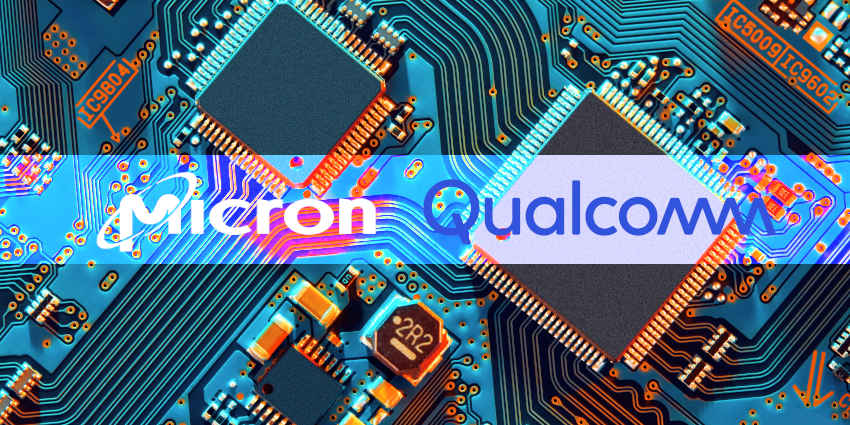Micron Technology recently announced that its low-power, double-data rate 5X (LPDDR5X) DRAM and Universal Flash Storage (UFS) 3.1 has been qualified for the Snapdragon XR2 Gen 2 Platform.
In October, Micron’s LPDDR5X and UFS 3.1 were upgraded to offer extended reality hardware designers massively accelerated speed and performance while lowering power consumption.
Devices requiring small form factors can now leverage Micron and Qualcomm Snapdragon technologies for untethered virtual and mixed reality (VR/MR) devices.
We collaborated with @Qualcomm to deliver next-level performance for #mixedreality and #virtualreality devices. Discover the possibilities with @Snapdragon and Micron: https://t.co/fhwEMhAX6T pic.twitter.com/2sJ64vTlwu
— Micron Technology (@MicronTech) October 24, 2023
Micron’s flagship memory solution also provides users with cutting-edge 1-alpha process node technologies and JEDEC power enhancements. It can also reach speeds of up to 8.533 gigabytes per second (Gbps) and offers backwards compatibility for LPDDR5 speeds, topping 6.4 Gbps.
Qualcomm developed its Snapdragon XR2 Gen 2 semiconductor in collaboration with Meta to debut the processing platform on the latter company’s recently released Meta Quest 3.
The Santa Clara-based firm’s solution provides single-chip architectures for immersive VR/MR experiences, enabling headset manufacturers to use thinner, more ergonomic devices without the need for external battery packs.
Micron also engineered its UFS 3.1 client storage with a 176-layer, high storage density NAND capable of minimising its footprint in devices for clutter-free integrations into immersive headsets.
The Boise, Idaho-based firm has remained a leader in memory chipmaking technologies and innovations and manufactures components for consumer, industrial, and enterprise use cases.
Micron Predicts Upward Trend Predicted in VR/AR Market
The announcement comes as the global virtual and augmented reality (VR/AR) market is expected to top $200 billion by 2030. Also, the market is set to grow from 2021 at a massive compound annual growth rate of 24 percent.
With the debut of increasingly complex immersive devices, Micron aims to back the XR industry in its hardware efforts by offering its solutions. Doing so will facilitate accelerated customer adoption rates and boost the potential for XR across the market.
With its advanced LPDDR5X and UFS 3.1 systems, Micron can simultaneously enable multiple applications and sensory processes to calculate rapidly and persistently changing data linked to user presence, position, and sensory perception.
With the solution, Micron can facilitate computing power capable of supporting the Metaverse with lifelike, immersive VR experiences.
Chris Jacobs, Vice President and General Manager of Embedded Market Segments, Micron, said,
“The metaverse has vast potential to revolutionize how we work and play. Bringing this innovation to life requires high-performance and low-power hardware that can keep pace with the lightning-fast speeds needed for mixed reality experiences. Our LPDDR5X and UFS 3.1 solutions are ideally positioned to serve as the foundation for the next generation of XR devices, providing the performance and power to unlock rich virtual worlds”
Domestic US Efforts to Strengthen, Build Semiconductor Industry
News of Micron’s solution comes a couple of months after Qualcomm publicly stated it would push to increase its collaboration with two major companies—Meta Platforms and OPPO—in a third quarter (Q3) earnings report.
At the time, Cristiano Amon, President and Chief Executive, Qualcomm, explained that his company’s work with Meta on developing the Quest 3 mixed reality headset aimed to increase adoption rates and standardise performance for immersive devices.
He said in the earnings call,
“[The] Meta Quest 3 is the first virtual and mixed reality headset to be powered by a next-generation Snapdragon XR platform developed in collaboration with Meta — the Quest 3 features two times the graphical performance, higher resolution, and a slimmer, more comfortable form factor than the Quest 2″
Due to the new XR2 Gen 2 profile, the Meta Quest 3 achieved a 40 percent slimmer form factor, massively enhanced optical displays and resolutions per eye. With the new chipset, Meta’s Quest 3 also achieved peak performance for switching between the virtual and physical worlds.
The latest developments in US chipmaker technologies evidence efforts from the US government to back national semiconductor industries via the Creating Helpful Incentives to Produce Semiconductors for America (CHIPS) Act.
In a White House statement, President Biden said,
“The bill will supercharge our efforts to make semiconductors here in America. And, you know, these tiny little computer chips, the size of a — of a fingertip that are building the — are the building blocks for the modern economy. They power everything from smartphones, to dishwashers, automobiles, and so much more”
With the new legislation, the US government allocated $52 billion USD in government funds to back research and development (R&D) across the semiconductor sector. It also provides tax credits and other incentives, totalling $24 billion, for companies building semiconductor fab plants. The XR Association, a Washington, DC-based organisation supporting the initiative, hailed the CHIPS Act as a “watershed moment” for the US tech and semiconductor industry.
Read the full article here

